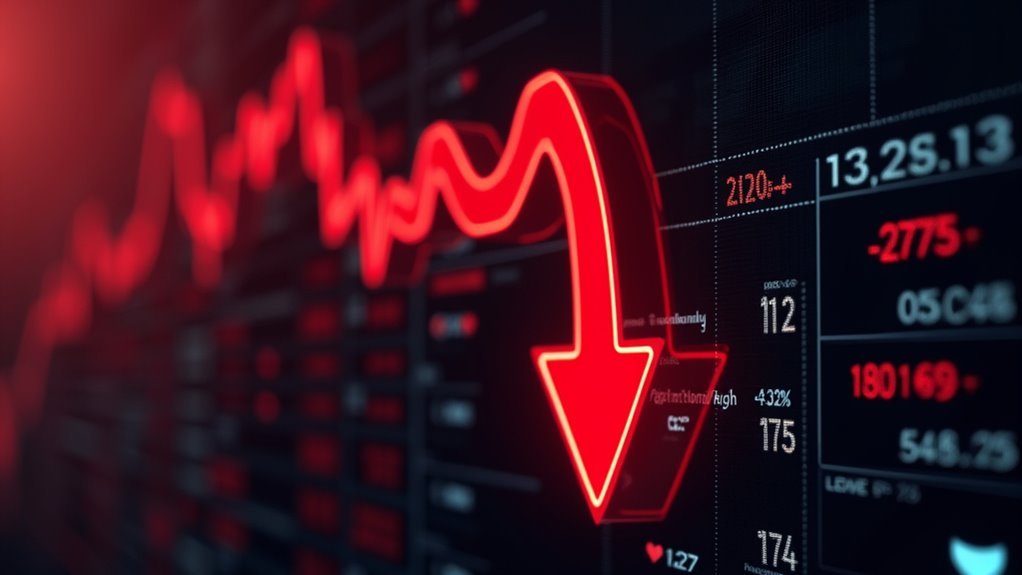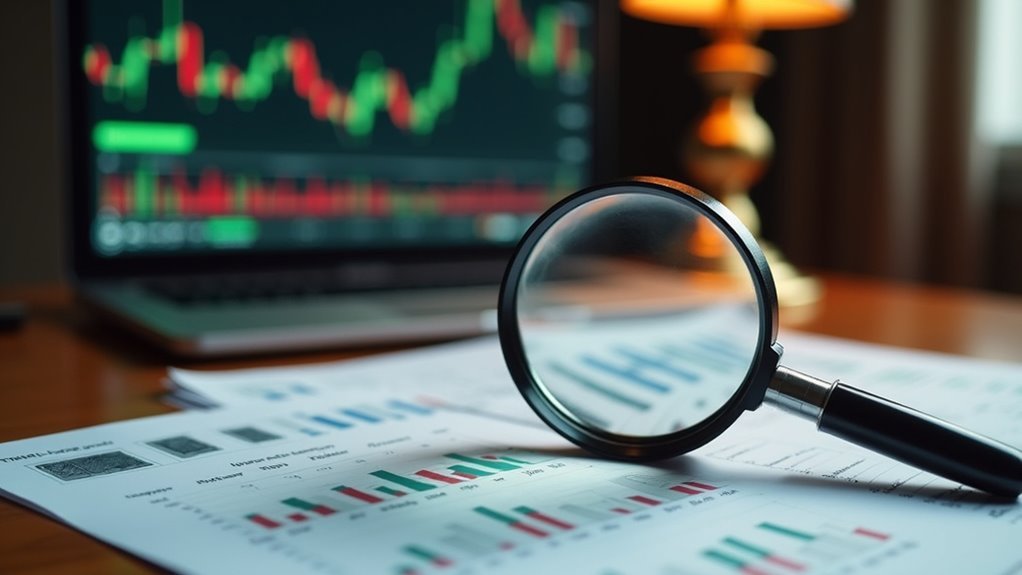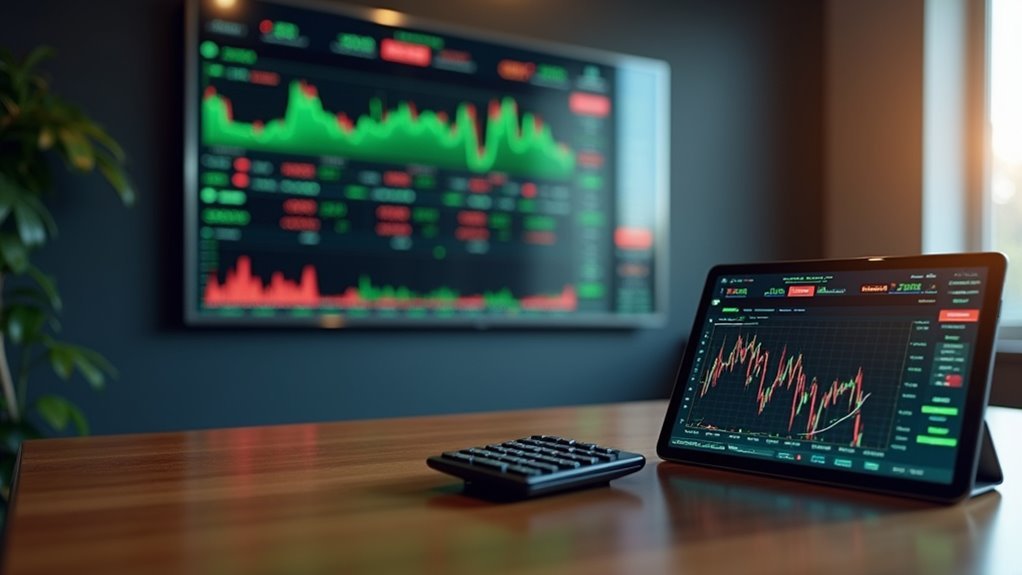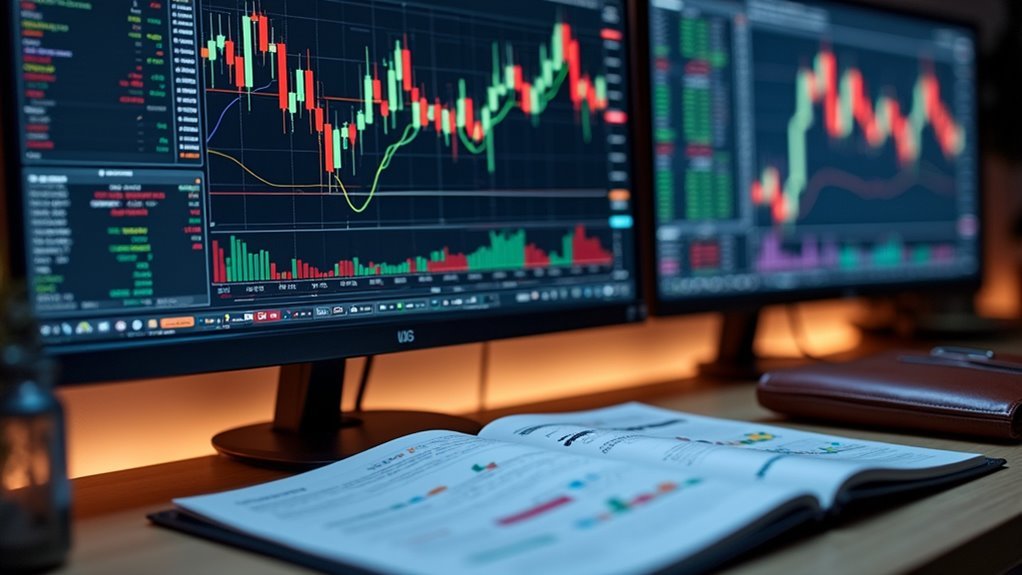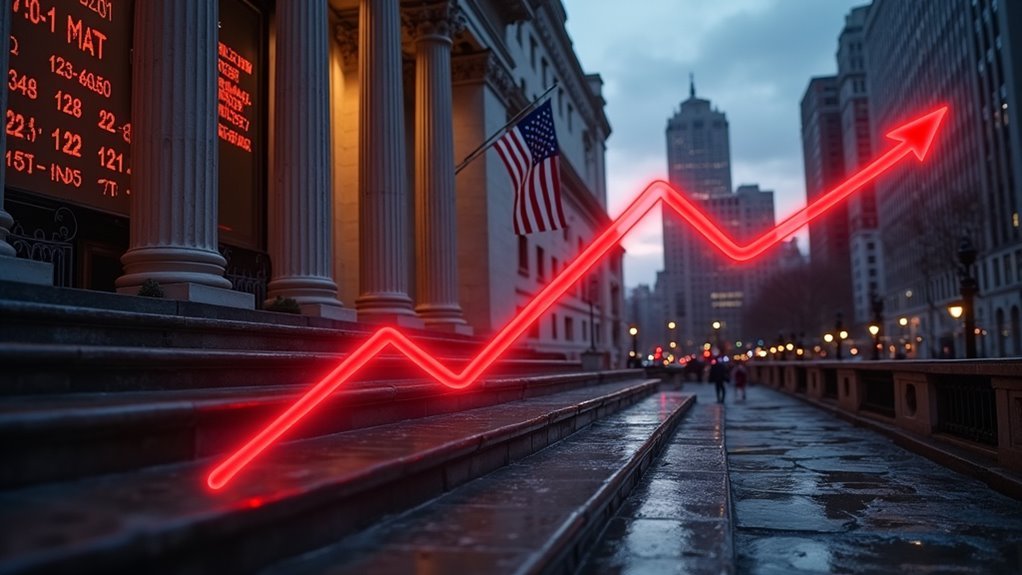Market corrections happen like clockwork – a 10% drop roughly once a year, with smaller 5% dips sprinkled throughout. These financial mood swings can last 3-4 months, hitting tech stocks and small-caps particularly hard. While seasoned investors view corrections as normal as seasonal flu, newcomers often panic at the first sign of trouble. Think of corrections as the market’s way of keeping things real, though some drops, like 2020’s COVID-19 plunge (-34%), pack extra punch. The deeper story lies in understanding why these predictable patterns emerge.
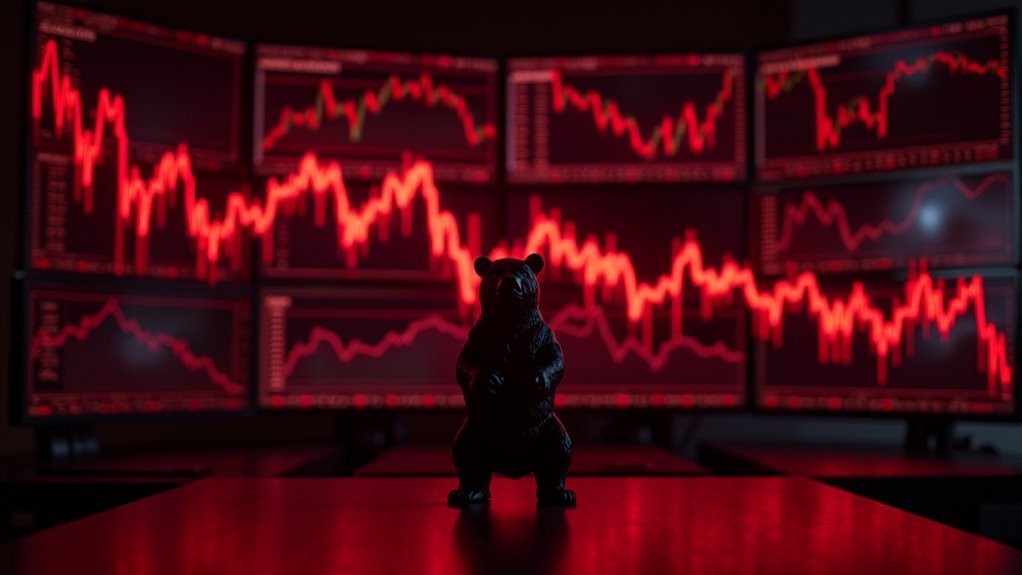
While most investors panic at the first sign of market declines, corrections are as natural as breathing. These 10% or greater drops in market value happen roughly once a year, like clockwork. The S&P 500 has been doing this dance since 1950, and somehow, the financial world hasn’t ended. Funny how that works.
Market corrections are like your annual flu shot – uncomfortable but predictable, and far better than the alternative of never facing reality.
The market’s mood swings come in different flavors. There’s the garden-variety 5% dip (three times a year, like seasonal allergies), the more serious 10% correction (annual, like your in-laws’ holiday visit), and the dreaded bear market – that 20% plunge that shows up every few years to remind everyone that markets aren’t a one-way ticket up. Measuring these corrections requires tracking from the peak to trough prices to determine their full extent.
These corrections don’t discriminate, but they definitely play favorites. Tech stocks and small-caps usually get punched in the gut harder than their bigger, steadier cousins. Meanwhile, defensive sectors sit back and watch the chaos, typically weathering the storm better than others. Since gold and blue-chips tend to be safe havens during market turmoil, they often dodge the worst of the damage. It’s like high school all over again – some kids just handle drama better.
History’s greatest hits include some doozies. Black Monday in 1987 saw stocks crater 22.6% in a single day – talk about a case of the Mondays. The 2020 COVID-19 correction said “hold my beer” and dropped 34% in just 33 days. Speed records, anyone? Rather than attempting to time these market events, studies show that dollar-cost averaging provides more consistent long-term results.
What triggers these market tantrums? Take your pick: overvalued stocks finally facing reality, the economy catching a cold, geopolitical drama, or the Fed playing with interest rates. Sometimes it’s just investors getting spooked by their own shadows.
Most corrections wrap up in 3-4 months, though some overachievers drag on longer. The market’s like that friend who keeps making the same mistakes but somehow lands on their feet. Since corrections show up as regularly as birthday cards from your dentist, maybe the real surprise isn’t that they happen – it’s that they still surprise anyone at all.
Frequently Asked Questions
How Can Individual Investors Protect Their Portfolios During a Market Correction?
Smart investors diversify across multiple asset classes – stocks, bonds, real estate. No-brainer.
They load up on defensive sectors like utilities and consumer staples that tend to weather storms better.
Some use put options and stop-losses as safety nets. Regular portfolio rebalancing keeps things in check.
Cash reserves? Always handy when markets tank.
Quality dividend stocks provide steady income while waiting out the chaos.
What Role Do Algorithmic Trading Systems Play in Market Corrections?
Algorithmic trading systems are both heroes and villains during market corrections. They provide essential liquidity – until they don’t.
When markets get choppy, these automated traders can amplify price swings dramatically. Some algos follow trends, pushing selloffs deeper. Others slam the brakes, halting trades during volatility.
High-frequency trading, representing over half of market volume, can turn a bad day into a full-blown correction.
How Do International Markets Influence Corrections in Domestic Stock Exchanges?
International markets pack a serious punch on domestic exchanges. Bad news in Asia can trigger European sell-offs before U.S. markets even open.
It’s a domino effect. Global companies listed on multiple exchanges create instant ripple effects. Currency fluctuations shake things up too.
When major overseas markets tank, domestic investors often panic and dump stocks. Thanks to technology, market fear spreads faster than cat videos on social media.
Can Market Corrections Be Accurately Predicted Using Technical Analysis Indicators?
Technical analysis indicators can help identify potential market corrections, but they’re far from perfect.
Sure, tools like MACD and RSI occasionally nail it – like predicting the 2021 crash. But they’re notorious for false signals.
Historical data shows only 6 out of 27 post-WWII corrections became bear markets. It’s more educated guesswork than science.
Technical indicators lag behind, and they can’t predict unexpected events.
What Is the Typical Recovery Time After a Significant Market Correction?
Recovery times vary dramatically. Most 10-20% corrections bounce back within 3-4 months, while brutal bear markets can drag on for years.
Half of all corrections heal within 2 months – pretty quick. But when things get ugly, like the 2000 dot-com crash, recovery took a painful 7 years.
Recent history shows faster comebacks though – the 2020 COVID crash only needed 5 months to reach previous highs.
